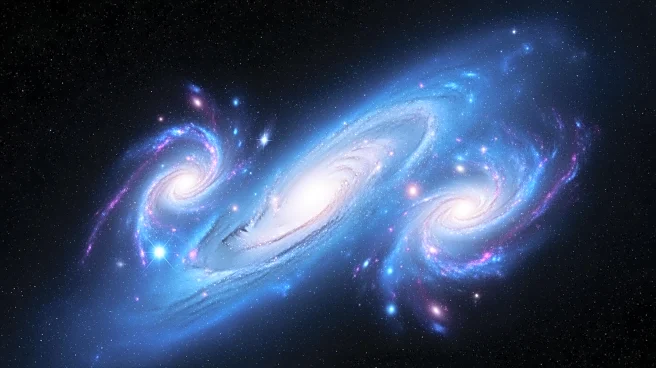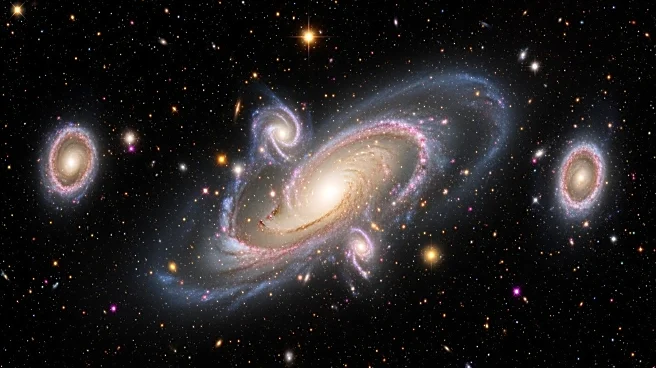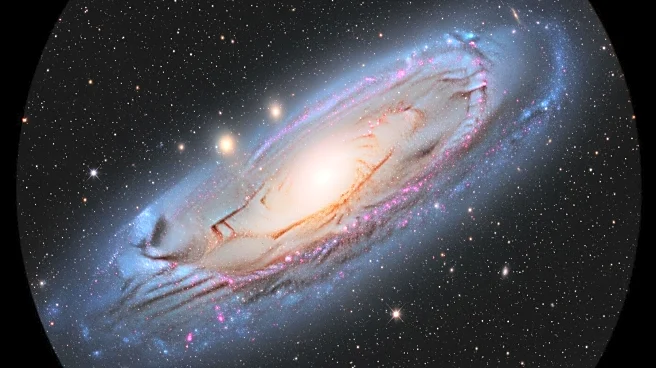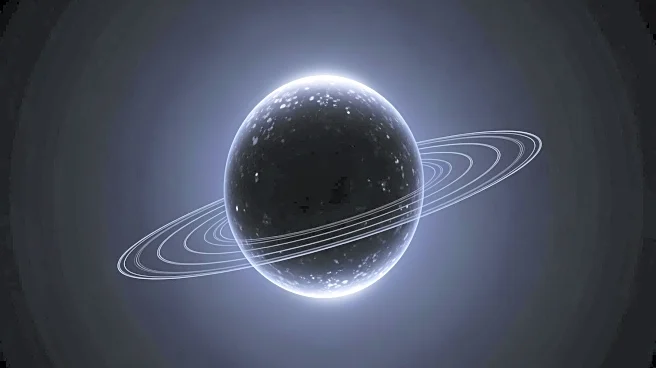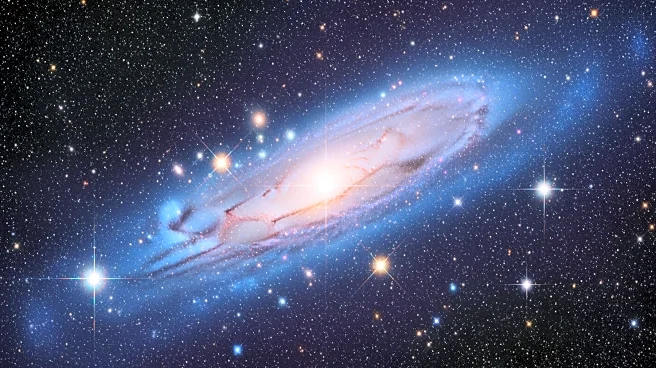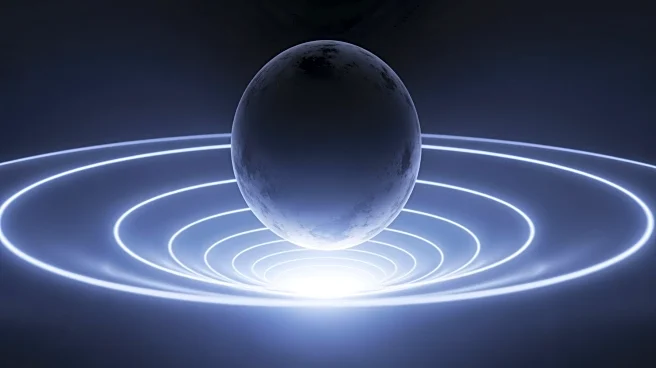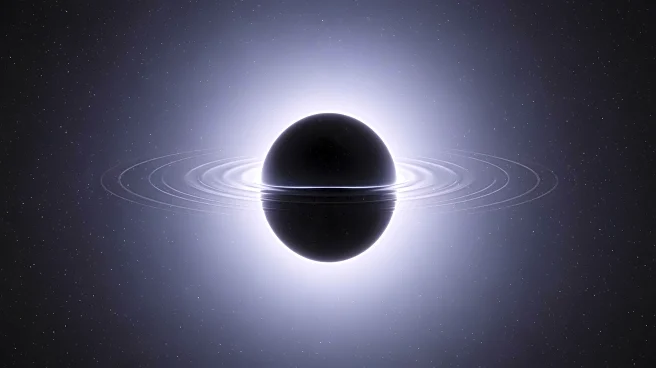What's Happening?
Astronomers, led by Ari Visbal from the University of Toledo, Ohio, have potentially identified the first generation of stars, known as Population III stars, using data from the James Webb Space Telescope (JWST). These stars, believed to be composed of helium
and hydrogen, formed around 200 million years after the Big Bang. The discovery was made in a distant galaxy called LAP1-B, where the stars appear to meet the theoretical predictions for Population III stars, including formation in dark matter clumps and massive size. The findings, published in The Astrophysical Journal Letters, provide new insights into the early universe.
Why It's Important?
The potential discovery of Population III stars is a significant milestone in understanding the early universe and the formation of the first celestial bodies. These stars are crucial for studying the conditions of the universe shortly after the Big Bang and the processes that led to the formation of galaxies and other cosmic structures. The research offers a glimpse into the origins of the universe and the fundamental elements that shaped its evolution. This discovery could pave the way for further exploration of ancient cosmic phenomena and enhance our knowledge of the universe's history.
What's Next?
While the findings are promising, further research is needed to confirm the existence of Population III stars. Future studies will focus on refining models of early star formation and utilizing advanced observational techniques, such as gravitational lensing, to identify more candidates. The ongoing analysis of JWST data will continue to play a crucial role in uncovering the mysteries of the early universe. As astronomers gather more evidence, the understanding of the universe's formative years will become clearer, potentially leading to groundbreaking discoveries in cosmology.





